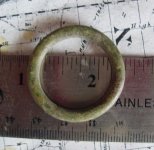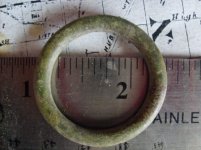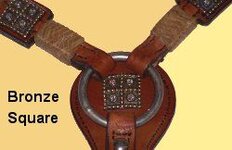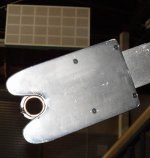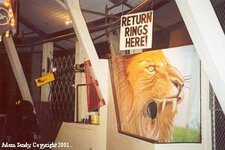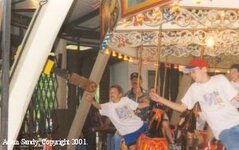cosmic
Hero Member
- Dec 31, 2006
- 882
- 50
- Detector(s) used
- Nokta Fors Core, X pointer, Sunrays
- Primary Interest:
- All Treasure Hunting
I was going through some odds and ends from the schoolyard (1890s).. I ran across this, which I remember digging up at the swings.. It was deep as my pinpointer is all I can remember, so I'd say 8" or a little more..
As I looked at it I thought "a brass ring, must be a plumbing part, Oh well" and started to toss it.. Then it struck me "is this a brass ring that was used for a free ride on a merry-go-round?" So does anyone here know what size they were.. It has no marking at all, round, not compressed or flattened in any way,made from heavy brass, and weighs 9.7 grams.. So did my M-6 grab me a brass ring??
Ray
As I looked at it I thought "a brass ring, must be a plumbing part, Oh well" and started to toss it.. Then it struck me "is this a brass ring that was used for a free ride on a merry-go-round?" So does anyone here know what size they were.. It has no marking at all, round, not compressed or flattened in any way,made from heavy brass, and weighs 9.7 grams.. So did my M-6 grab me a brass ring??
Ray


